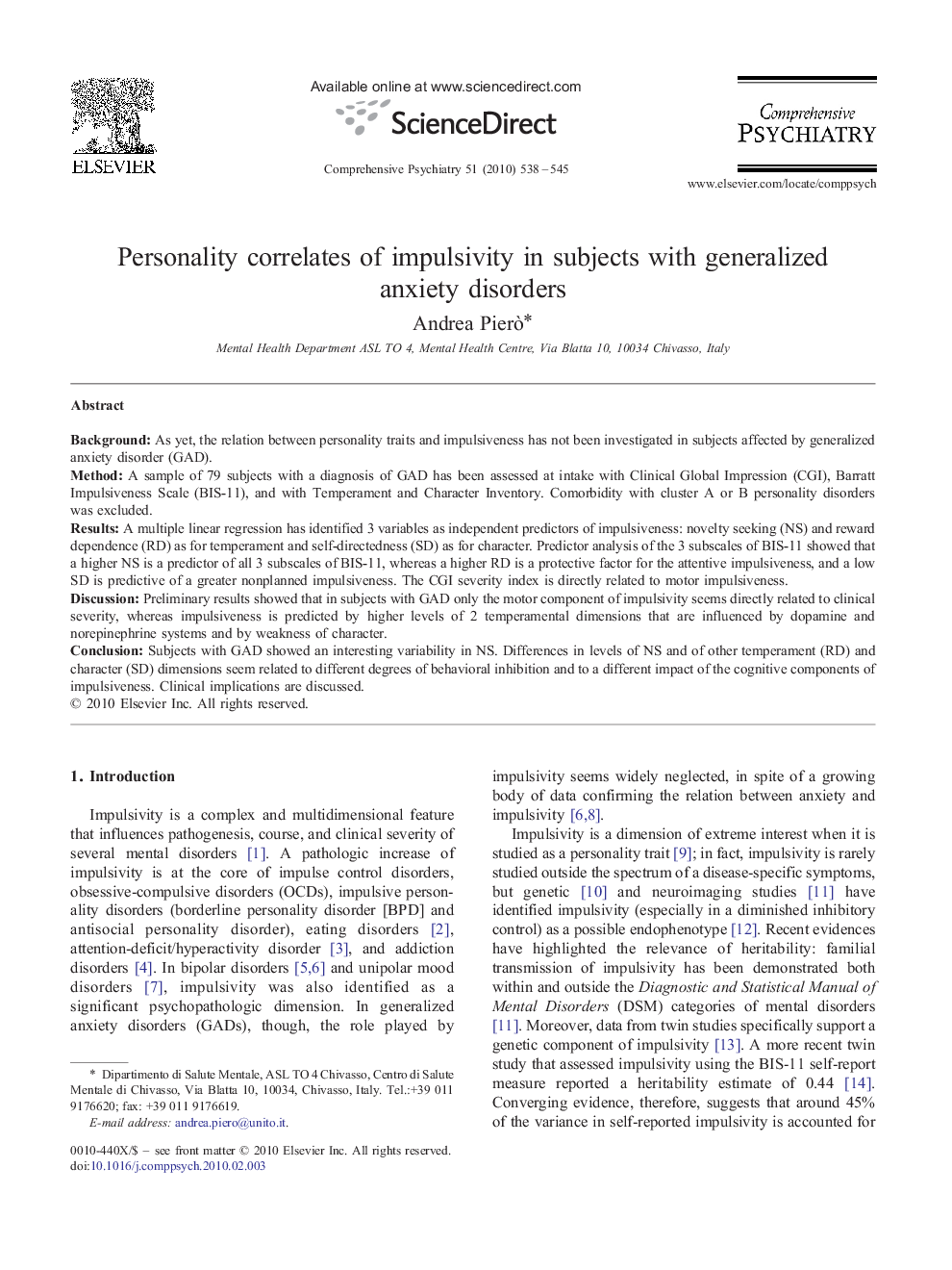| کد مقاله | کد نشریه | سال انتشار | مقاله انگلیسی | نسخه تمام متن |
|---|---|---|---|---|
| 318081 | 538279 | 2010 | 8 صفحه PDF | دانلود رایگان |

BackgroundAs yet, the relation between personality traits and impulsiveness has not been investigated in subjects affected by generalized anxiety disorder (GAD).MethodA sample of 79 subjects with a diagnosis of GAD has been assessed at intake with Clinical Global Impression (CGI), Barratt Impulsiveness Scale (BIS-11), and with Temperament and Character Inventory. Comorbidity with cluster A or B personality disorders was excluded.ResultsA multiple linear regression has identified 3 variables as independent predictors of impulsiveness: novelty seeking (NS) and reward dependence (RD) as for temperament and self-directedness (SD) as for character. Predictor analysis of the 3 subscales of BIS-11 showed that a higher NS is a predictor of all 3 subscales of BIS-11, whereas a higher RD is a protective factor for the attentive impulsiveness, and a low SD is predictive of a greater nonplanned impulsiveness. The CGI severity index is directly related to motor impulsiveness.DiscussionPreliminary results showed that in subjects with GAD only the motor component of impulsivity seems directly related to clinical severity, whereas impulsiveness is predicted by higher levels of 2 temperamental dimensions that are influenced by dopamine and norepinephrine systems and by weakness of character.ConclusionSubjects with GAD showed an interesting variability in NS. Differences in levels of NS and of other temperament (RD) and character (SD) dimensions seem related to different degrees of behavioral inhibition and to a different impact of the cognitive components of impulsiveness. Clinical implications are discussed.
Journal: Comprehensive Psychiatry - Volume 51, Issue 5, September–October 2010, Pages 538–545